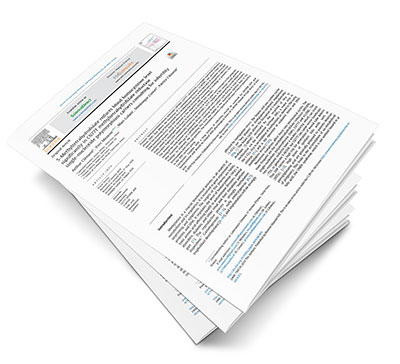Very recently, a publication of Clement et al (click on the white paper image to download). has recommended that couples with a long history of infertility should be analysed for MTHFR polymorphism and homocysteine. The group tested blood Hcy level before and after treatment with Quatrefolic to control the efficacy of the treatment before starting Assisted Reproductive Technology (ART) attempts.
The volunteers, treated for at least 3 months with 5-MTHF glucosamine salt (Quatrefolic) at a dose of 600 µg per day (Impryl Parthenogen, or Tetrafolic Nurilia, complemented with B components and zinc) – hada history of repeated miscarriages (>3) or were facing infertility for >3 years and had at least 3 ART failures been tested for MTHFR polymorphism (C677 T).
In the 89 couples included - 50 were heterozygous for the MTHFR polymorphism, 39 homozygous and 72 wild-type - Quatrefolic reduced rapidly the Hcy level of 42.7% in homozygous and 20.1% in heterozygous subjects, with no significant difference (p = 0.12) between the normalized homocysteine (Hcy) level of homozygous and heterozygous (10.5 mmol/L vs. 9.8 mmol/L).
“The results of the study provide further data on the importance of normalizing homocysteine while confirming the efficacy of Quatrefolic in doing this, without however changing its values in subjects without polymorphism carriers and with normal levels of Hcy.

Since the decrease in Hcy level with 5-MTHF allows high pregnancy and delivery rates in patients with repeated miscarriages (RM) and ART failures [2,3,4] and thanks to the new findings showed by Clement et al. more data are available on the importance to use the right folate source, such as the active folate form Quatrefolic.




